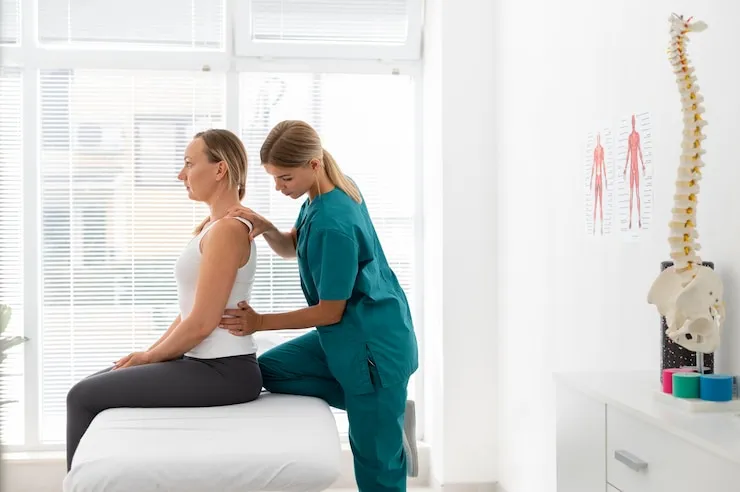Aaron Jackson
Understanding Your Spine and Discectomy: A Guide to Treatment Options for Back Pain
The spine is a marvel of engineering, providing support, structure, and flexibility to our bodies. It houses the spinal cord, a crucial pathway for messages traveling between the brain and the rest of the body. However, this complex system can be susceptible to problems, with a herniated disc being a common culprit for back pain. This article delves into the world of the spine, explores discectomy as a treatment option for herniated discs, and sheds light on alternative treatment approaches.
The Spine: A Foundation for Movement
The spine is made up of 24 individual bones called vertebrae, stacked on top of each other and separated by intervertebral discs. These discs act as cushions, absorbing shock and allowing for smooth movement of the spine. Each vertebra has a bony opening in the back called the spinal canal, which houses the spinal cord.
There are three main sections of the spine:
- Cervical spine (neck): The top 7 vertebrae provide flexibility for head movement.
- Thoracic spine (upper back): The middle 12 vertebrae connect to the ribs, forming the rib cage and providing stability.
- Lumbar spine (lower back): The bottom 5 vertebrae support most of the body's weight and are responsible for bending and twisting.
Herniated Disc: When Cushions Become Culprits
Intervertebral discs have a tough outer ring called the annulus fibrosus and a soft inner core called the nucleus pulposus. A herniated disc occurs when the annulus tears or weakens, allowing the nucleus pulposus to bulge or leak out. This bulging disc material can compress the spinal nerves exiting the spinal canal, causing pain, numbness, weakness, and tingling in the legs (sciatica) or arms, depending on the location of the herniation.
Symptoms of a Herniated Disc
The following symptoms may indicate a herniated disc:
- Pain: This is the most common symptom, often described as a sharp, radiating pain that worsens with certain activities.
- Numbness or tingling: Loss of feeling or a prickly sensation can occur in the area served by the compressed nerve.
- Weakness: Muscles in the affected leg or arm may feel weak, impacting daily activities.
- Sciatica: Pain that travels down the back of the leg, often described as shooting or burning, is a classic symptom of a herniated disc in the lower back.

Discectomy: Surgical Intervention for Herniated Discs
Discectomy is a surgical procedure to remove part or all of a herniated disc. It can be performed in two ways:
- Open discectomy: This traditional method involves a larger incision to access the spine and remove the herniated disc material.
- Microdiscectomy: This minimally invasive approach uses a smaller incision and specialized instruments to remove the herniated disc material. Microdiscectomy is often preferred due to faster recovery time and less tissue disruption.
Who is a Candidate for Discectomy?
Discectomy is typically considered for patients who have:
- Severe pain or neurological symptoms that haven't improved with non-surgical treatment for 6-8 weeks.
- Progressive weakness or worsening symptoms.
- Loss of bowel or bladder control (a rare but serious complication of a herniated disc).
Discectomy Procedure
Before surgery, a doctor will perform a thorough examination and run imaging tests like X-rays or MRIs to confirm the location and severity of the herniation.

During a discectomy:
- The patient receives general anesthesia and is positioned on their stomach.
- The surgeon makes an incision in the back and carefully separates muscles to access the affected area.
- A small portion of the bone may be removed to create more space for visualization.
- Using specialized tools, the surgeon removes the herniated disc material.
- The surgical site is cleaned and closed with sutures.
Discectomy Recovery
Recovery from discectomy typically involves:
- A few days of hospitalization for monitoring.
- Pain medication to manage discomfort.
- Physical therapy to regain strength and flexibility in the spine.
- Gradual return to normal activities, avoiding strenuous exercise for several weeks.

 Telehealth Visits Available
Telehealth Visits Available
